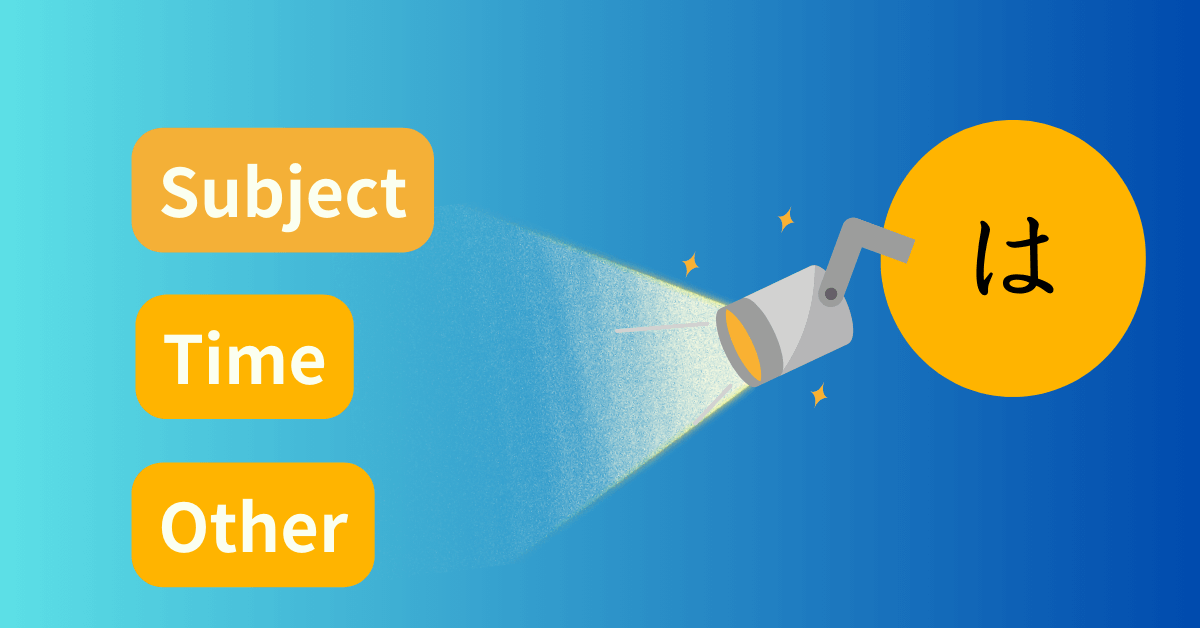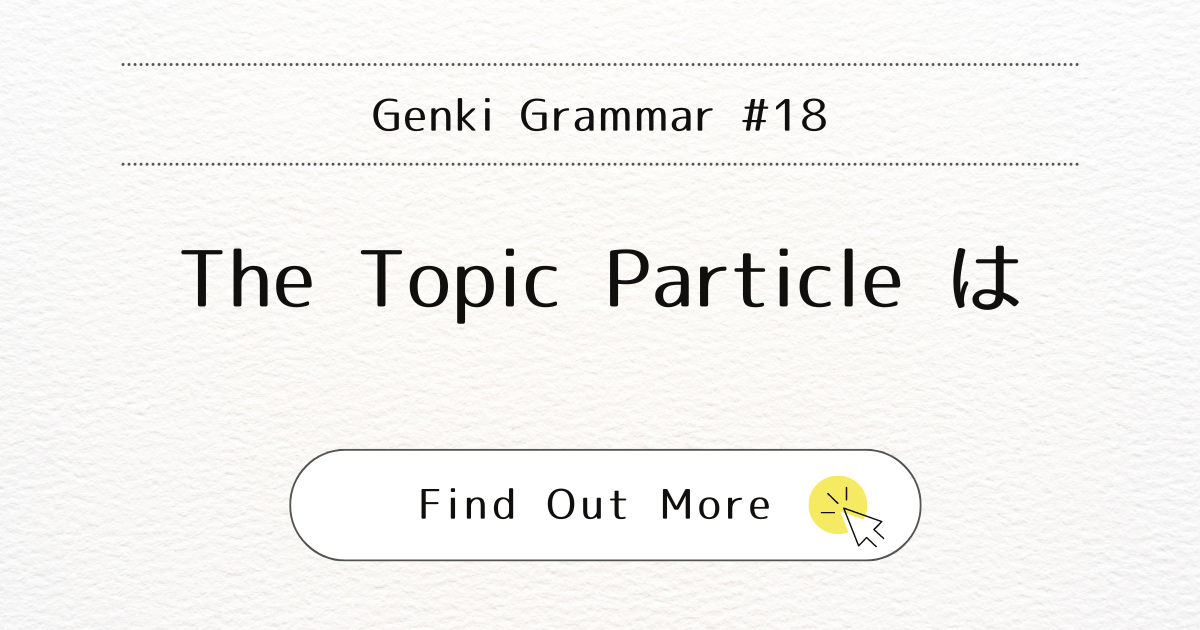
Introduction
Understanding the topic particle “は” (wa) is essential for mastering Japanese sentences. It helps you highlight what you want to talk about. This guide will explain what “は” means, when to use it, and provide examples to help you learn.
What It Means
The particle “は” (wa) presents the topic of your sentence. It means “As for X, it is such that…” This particle puts forward the item you want to discuss.
When You Use It
Use “は” when you want to highlight the topic of your sentence. The topic can be the subject, time, or any other element you want to emphasize.
Examples
Here are some examples to help you understand how to use “は” (wa):
1. Topic as Subject:
マリアさんは2年生です。
(Maria-san wa ni-nensei desu.)
Maria is a sophomore.
私の専攻は日本語です。
(Watashi no senkou wa Nihongo desu.)
My major is Japanese.
2. Topic as Time:
マリアさん、週末はたいてい何をしますか。
(Maria-san, shuumatsu wa taitei nani o shimasu ka?)
Maria, what do you usually do on weekends?
今日は東京に行きます。
(Kyou wa Toukyou ni ikimasu.)
I’m going to Tokyo today.
3. Inviting a Comment:
A: 朝ご飯は?
(Asa gohan wa?)
How about breakfast?
B: 食べません。
(Tabemasen.)
I will not eat.
In the above examples, “は” is used to highlight the topic of the sentence, whether it’s the subject, time, or a specific item to invite a comment.
Note
The particle “は” (wa) can be used with subjects, time expressions, or direct objects to highlight them.
It can direct the listener’s attention and invite comments or responses, like in the sentence: 朝ご飯は? (How about breakfast?).
Conclusion
Mastering the particle “は” (wa) helps you create clear and focused sentences in Japanese. By using “は” correctly, you can effectively highlight the topic you want to discuss, making your conversations more precise and engaging.



